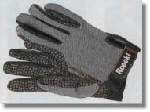
Roeckl Clarino Gloves
$34.95
| |
|
EEE Alert
|
Nine horses in Virginia - eight from the southeastern region of Chesapeake and Suffolk, and one horse from Prince George – have died from what is believed to be Eastern Equine Encephalitis (EEE). Tissue samples from those horses have been submitted to the Virginia Department of Agriculture and Consumer Services (VDACS), as well as the USDA’s national Veterinary Services Laboratory (NVSL) in Ames, Iowa. Of those nine, five horses have been confirmed to have had the virus. The results are still pending on the remaining four, two of which had the brain lesions characteristic of encephalitis, one showed no signs of the characteristic lesions, and one has just started undergoing the diagnostic process. Since various types of encephalitis can cause these microscopic lesions (e.g., EEE, Western Equine Encephalitis [WEE], St. Louis Encephalitis, and West Nile virus), the labs are required to grow the virus to determine the identity of it. Through this virus isolation process, scientists have also determined that it is a very “hot” or “fast-growing, aggressive strain.”
A veterinarian for the VDACS, Dr. Bruce Akey, has noted that this is an exceptionally high number of deaths from the disease, especially in such a short period of two to three weeks. While it may not be classified as an epidemic, “it is an unusual number of cases.” As a result of this recent outbreak, veterinarians in the state of Virginia are emphasizing the importance of having horses vaccinated (none of the nine horses had been vaccinated). Given the wet summer and the increased mosquito population, Maryland horse owners should also make sure their horses are vaccinated if they haven’t done so already. Once the horse has been infected, chances of survival are slim with the death rate at anywhere from 50% to as high as 98%. Even if the horse lives, the animal usually suffers from some form of neurological deficit, to include vision impairment, permanent muscle weakness, and behavioral problems.
MDhorse.com will continue to provide updates as they become available.
|
|
|
|
|
|
|



